With the 16-bit classic, River City Girls Zero, having finally received a worldwide release this year and the freshly launched River City Girls 2 currently knocking gamers’ socks off, it’s time to take a fresh look at the original River City Girls from WayForward and Arc System Works. RCG1, as we’ll call it, combines elements of the original River City Ransom and the formerly Japan-exclusive RCG Zero to make a stylish and deep beat ‘em up RPG adventure. Despite some flaws that would later be improved upon in the sequel, River City Girls 1 holds up very well.
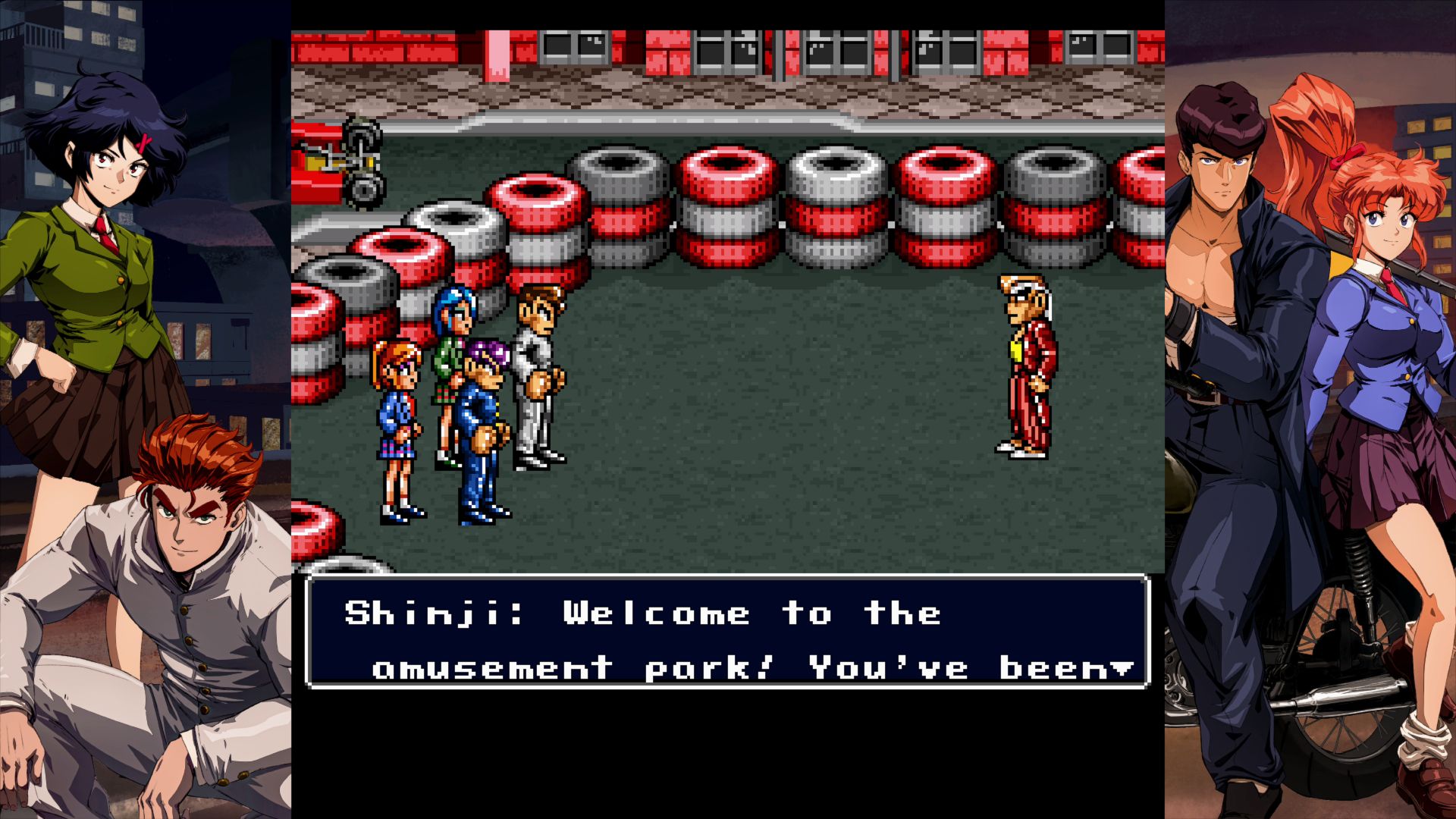
River City Girls Zero
RCG1 functions as a loose sequel/reboot to RCG Zero. That game, first released in Japan in 1994 and finally released in English in 2022, introduced Kyoko and Misako, the girlfriends of Kunio and Riki, the traditional stars of the River City/Kunio-kun franchise. The girls acted as playable characters throughout about 70% of Zero. In RCG1, Kyoko and Misako take center stage, and Kunio and Riki only become playable after beating the game. The Sanwakai criminal empire was introduced in Zero and returns in RCG1, though the male gang leaders Sabu and Ken only return in RCG2, not 1. The ginormous boss girl Misuzu and Kunio’s friend Hiroshi return from Zero. Finally, the wonderful and expressive art style of RCG1’s characters is inspired by Zero’s sprites, which are unusually large and detailed compared to most Kunio-kun games.
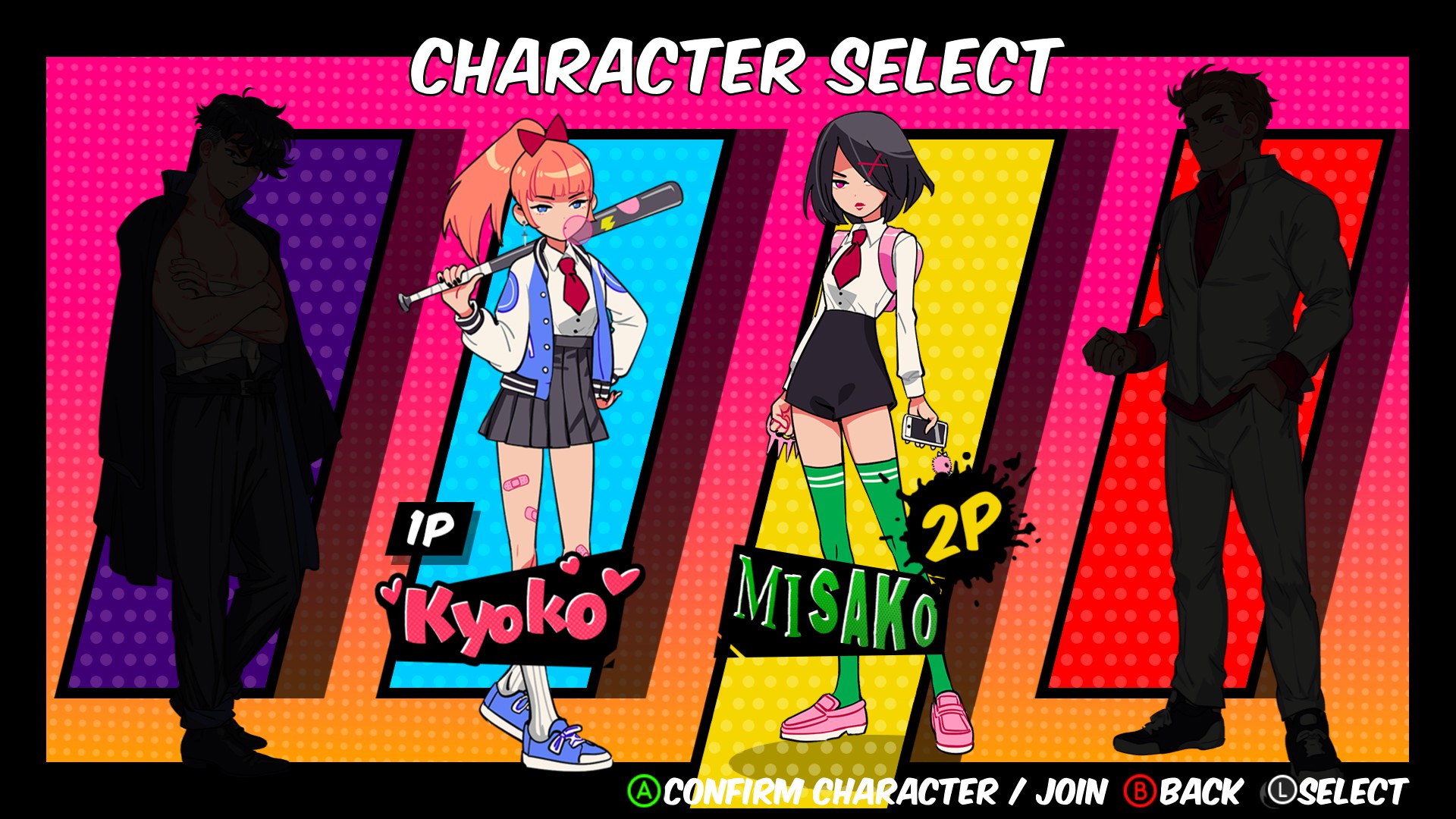
Following a gorgeous animated intro with a peppy lyrical song, the game opens with a fully-voiced animated comic. Misako and Kyoko are sitting in detention when they hear that Kunio and Riki have been kidnapped. The girls quickly escape from detention, raising the ire of the school principal and numerous thugs. From there, they embark on an adventure to rescue their boyfriends that will pit them against Sabuko (an original character), the acting head of the Sanwakai gang. The writing and voice acting remain delightful throughout the entire game. Story-related NPCs share amusing exchanges with the girls and sometimes give them quests or items, boss fights open with hilarious banter, and occasional flashbacks provide clever insights into the titular girls and other characters. The narrative is truly a highlight.
RCG1’s gameplay largely follows that of River City Ransom rather than RCG Zero, which lacked RPG elements. Here, the girls will travel back and forth across various parts of town, visiting shops and battling mobs as they search for characters and items that will advance their quest to find their boys. Progression is slightly linear in that some paths will be locked or otherwise inaccessible until certain points in the story, but players can always backtrack on foot or use the bus for fast-traveling to previous sections of the map.
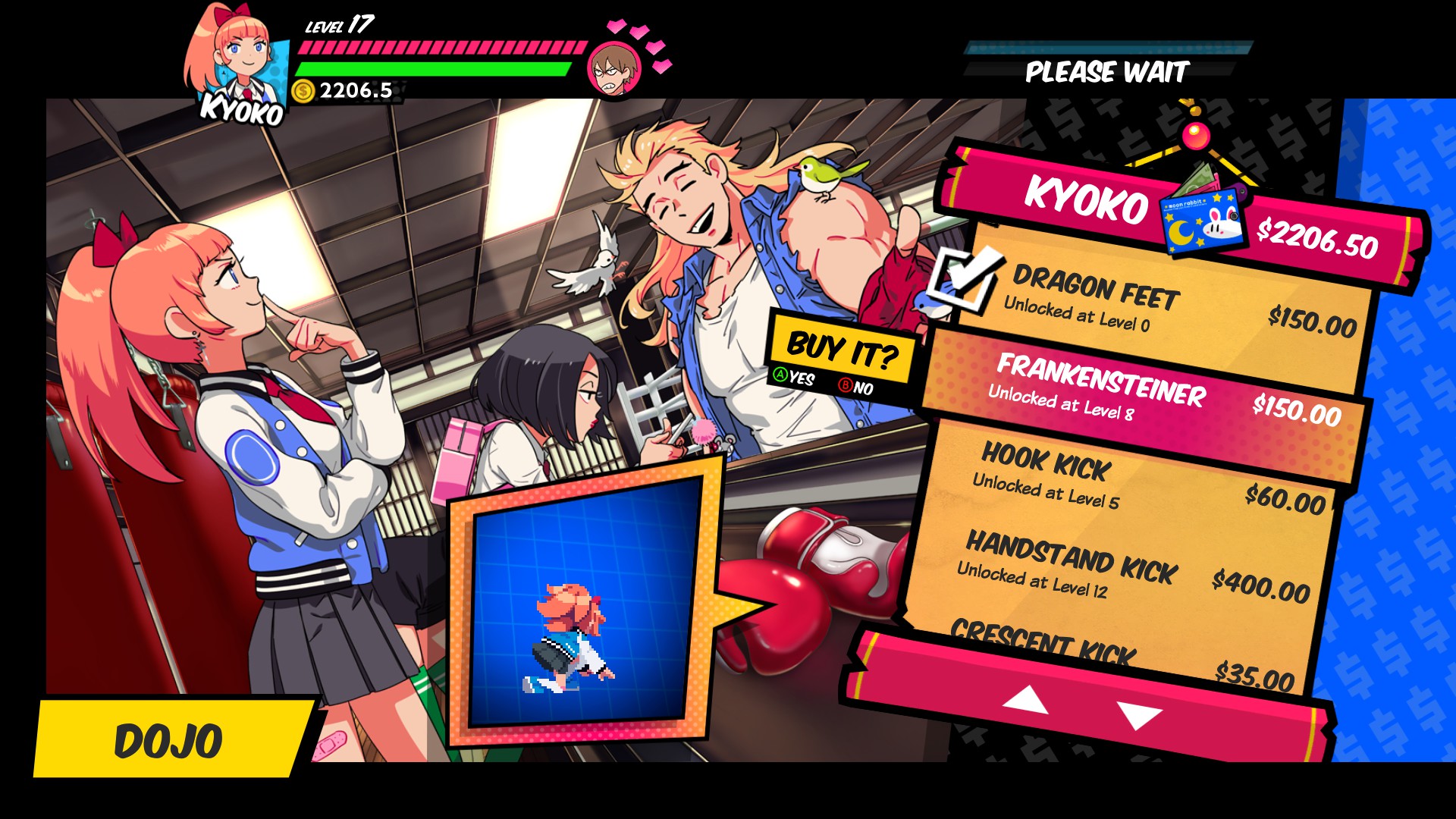
RPG-style character growth is present in two ways. First, characters gain experience and level up by defeating enemies. Leveling up unlocks a few moves, increases stats, and provides a welcome health refill. Second, the heroes can also buy health-replenishing items and equippable accessories in the game’s many shops (which are mostly staffed with cameo characters from Double Dragon, Combatribes, and other Kunio-kun games). Each food and health item provides a stat boost the first time it’s eaten, similarly to how food works in River City Ransom. Buying and eating every bit of food you come across ends up being an important part of character growth, but you can’t get stat boosts from eating the same item more than once this time. As for equippable items, two can be equipped at a time, and they provide various minor bonuses. The item system is a bit underdeveloped but would later be improved upon in RCG2.
Combat is an area in which RCG1 significantly evolves and sets itself apart from past River City games. The punch and kick buttons are joined by a special move button. All three buttons can be used in combination with different D-Pad/stick directions to perform unique moves (once they’ve been learned from leveling up or bought from a dojo). Enemies can be grabbed while staggered, stomped when down, and even wielded like a weapon. The arsenal of weapons is impressive too, with the standard baseball bats and trash cans joined by yo-yos, bicycles, boomerangs, and even large fish. Finally, all non-boss enemies can be recruited and summoned to deliver attacks.
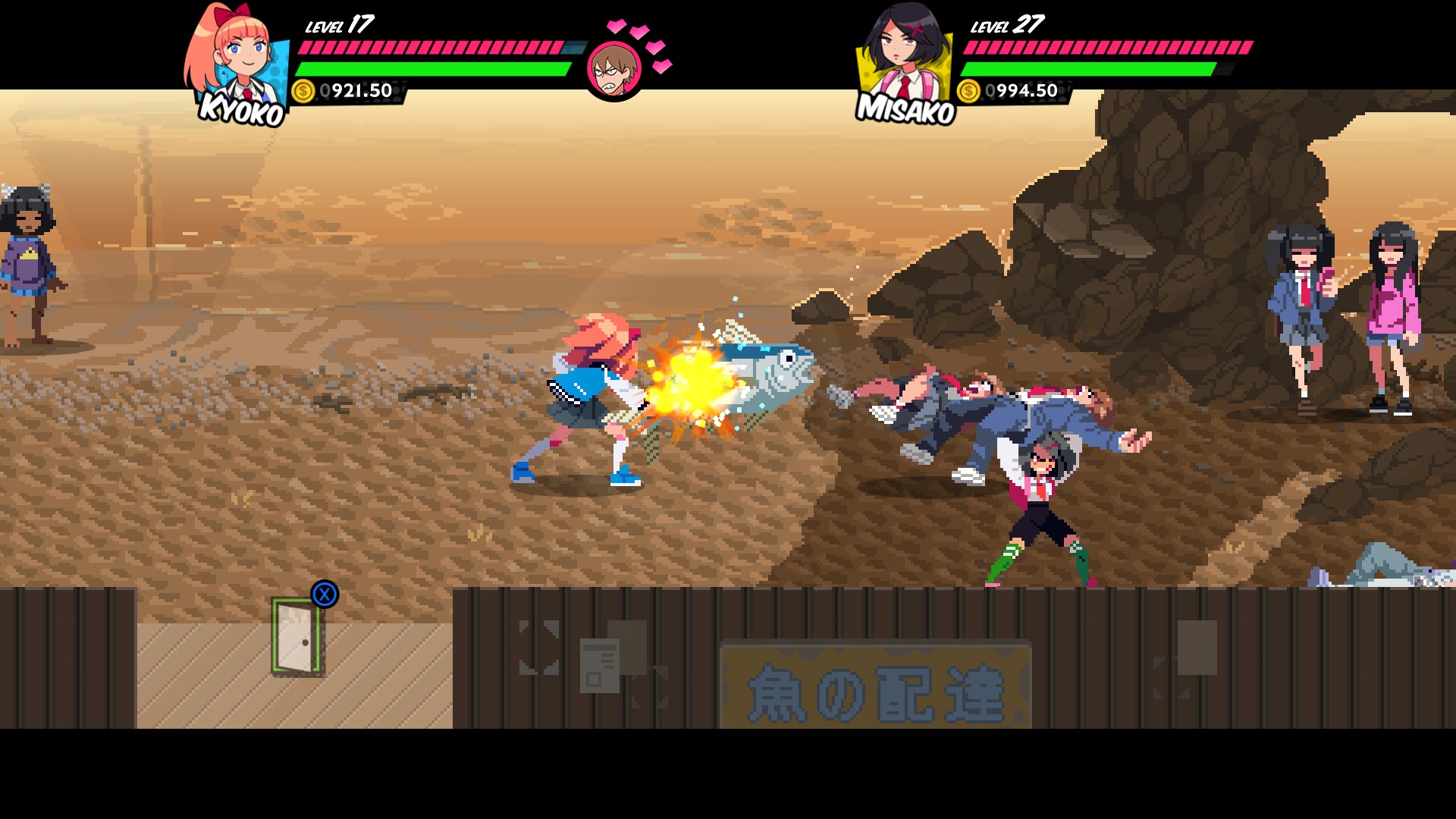
While RCG1’s combat is quite good, the game has some issues with difficulty. It starts with the regular mobs of enemies. They’re very aggressive, and their hits always do a lot of damage, even when players have leveled up. Players will often take significant damage when they’re just trying to get around or farm money. This is a problem because health-replenishing items drop way too infrequently (they drop a lot more in RCG2), and food items from the shop cost more money than what the average enemy or mob drops.
What’s more, gamers will lose 20-50% of their money when dying, so a single death can really screw you over. Player characters don’t flash when low on health, so you really have to watch your health bar in this game. That said, players can buy and keep food items for later use, even during boss fights, which makes tough battles much more manageable. Regular fights do get easier as the heroes increase their stats and learn new moves. The damage dealt by enemies remains awfully high, but players will eventually be able to defeat them more effectively.
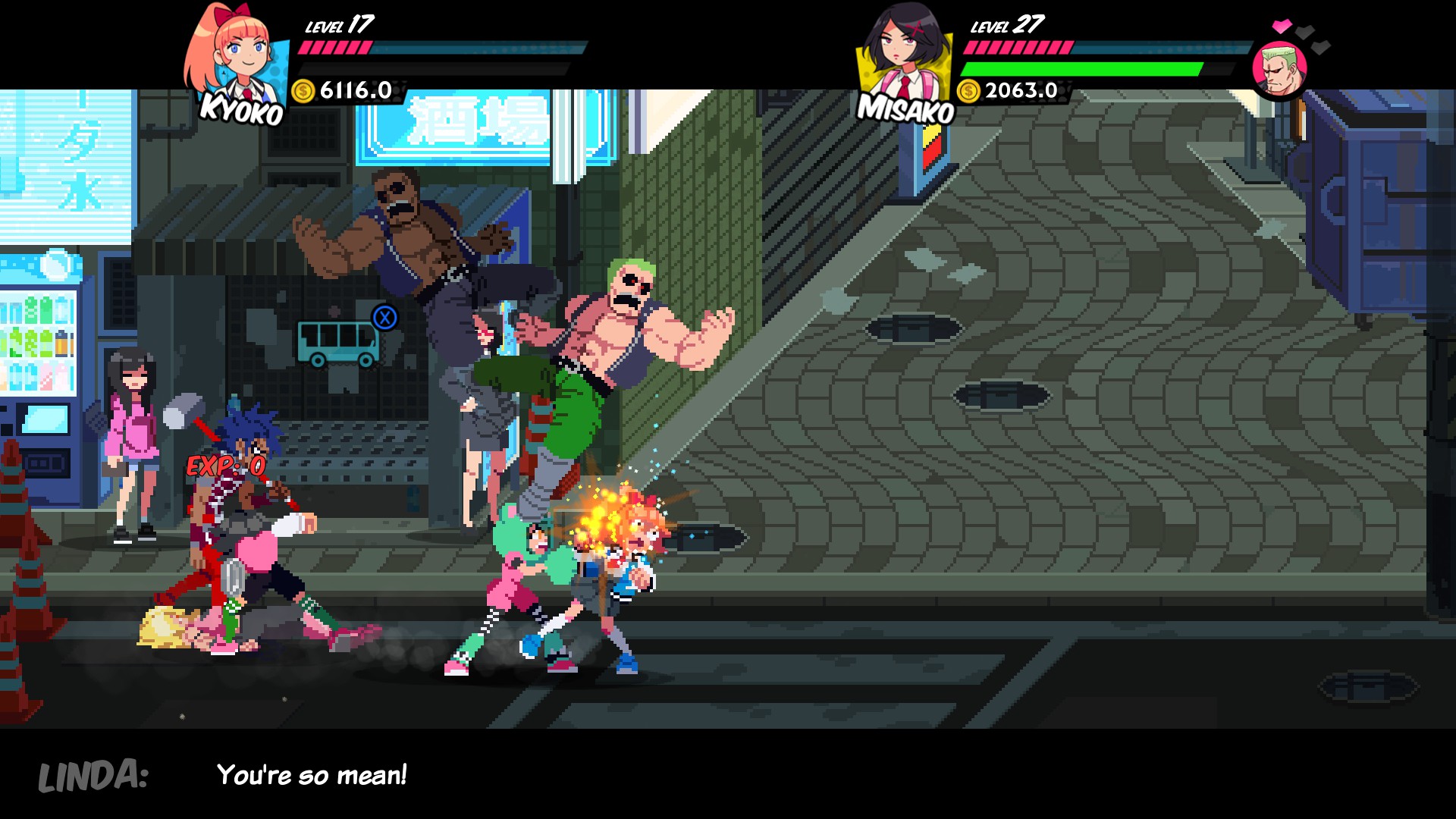
A cooperative element meant to alleviate the threat of death is the revival mechanic. In co-op games, when a player dies, her soul will slowly float off-screen. The surviving player can revive the fallen comrade by stomping her body until the soul returns. It’s a clever system that adds some nice personality to the game, but there’s a catch: you hardly ever get to successfully revive a partner. Enemies keep attacking while a character is downed, and there’s precious little time to save the soul before it floats away. Thus, more often than not, the surviving player simply won’t be able to perform the rescue in time. WayForward says the revival mechanic is more forgiving in RCG2, but I haven’t played enough co-op in the sequel yet to verify that.
RCG1 supports 2 player local co-op; online co-op is introduced in RCG2. Friendly fire is off by default but can be turned on if desired. Each character on the primary player’s save file levels up, earns money, and gains items independently. Because of that, it’s hard to bring in a second player later in the game – they’ll be under-leveled and missing a lot of items. It can still be done, but the second character will likely need to grind for a while to catch up with the main character. Shop purchases aren’t shared at all between players, so each player really needs to earn their own money in order to keep up. Equippable items are shared between all characters in RCG2, making drop-in co-op more approachable in that game.

The first River City Girls takes about 8-10 hours to complete when doing all the side quests. After beating the game for the first time, players will receive half of a mysterious necklace and a downer ending that hints that the story’s not over. By finding all 25 statues of Sabu (the main villain of RCG Zero and RCG2), players can get the other half of the necklace. Entering the final boss room with both pendants equipped will reveal the secret final bosses. Thwart them to receive the real ending. Beating the game also unlocks Kunio and Riki as playable characters (who will need to be leveled up from scratch) and the New Game Plus mode, bestowing even more playtime to an already robust first game.
Looking back at River City Girls in 2022, it’s very impressive how WayForward managed to build such a beautiful, deep game like this based on RCG Zero, a then-forgotten game that simply didn’t play very well. Zero did have a strong story and cool characters, though, and RCG1 certainly capitalizes on those elements while adding a whole classroom full of creativity, wit, and charm. Oh, and the music is great too. The only thing limiting RCG1’s mainstream appeal is the aggressiveness of the enemies and the steep financial penalties for dying. River City Girls 2 certainly improves on the difficulty front, but the first game is still worth playing if you don’t mind a challenge.
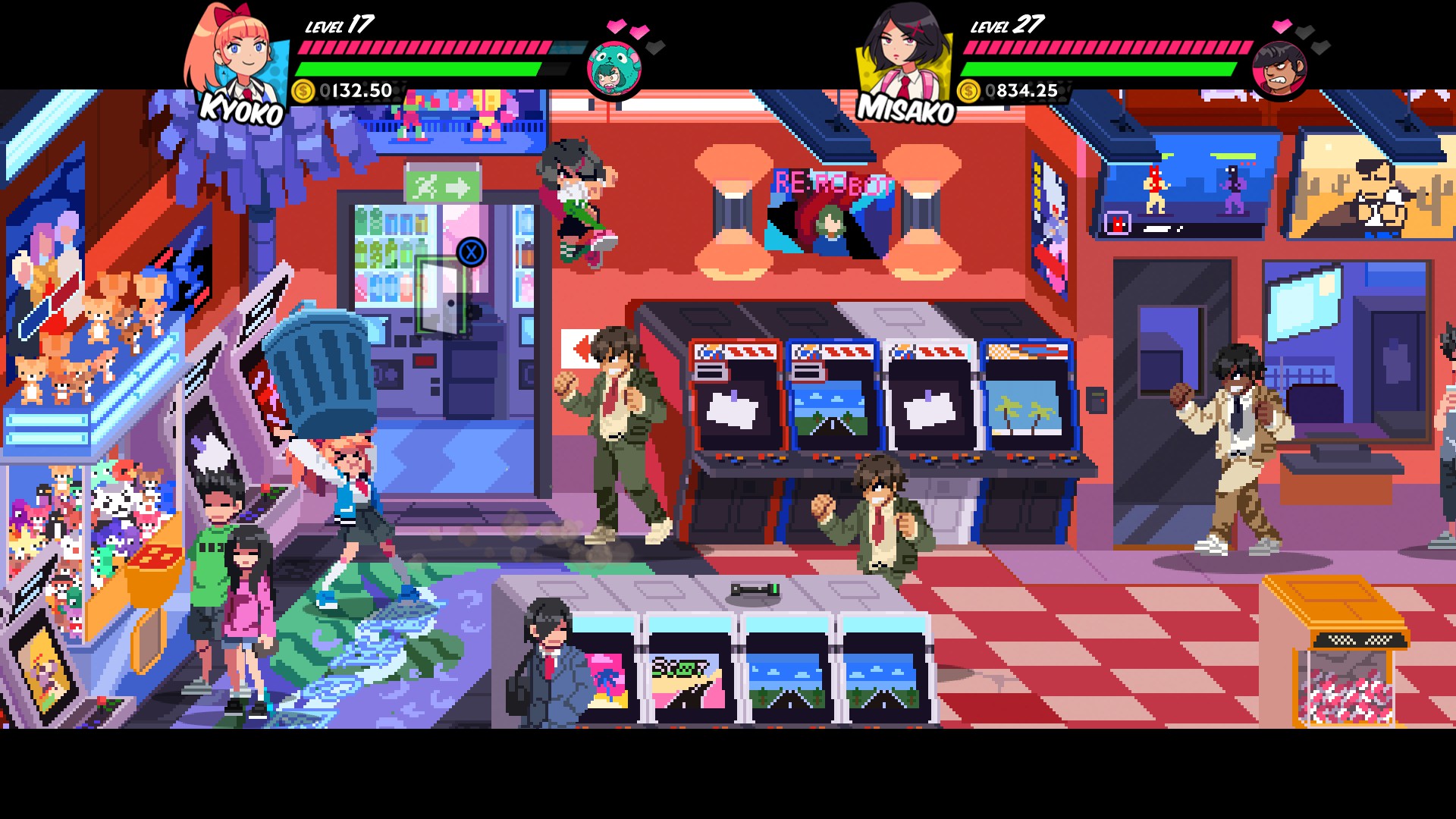
River City Girls sells for $29.99 on Xbox, PlayStation 4 and 5, Switch, and Steam. The RCG1 soundtrack sells for $9.49 on Amazon and other digital music storefronts. A physical 2-pack of River City Girls 1 and 2 is available for Switch, PlayStation 4, and PlayStation 5 from Play-Asia and other import sellers.
A PlayStation 5 review copy was provided by the developer.
Verdict
Co-Op Score
Overall
The Co-Op Experience: Two player drop-in/drop-out local co-op is supported throughout the campaign. Characters level up and earn money independently, so a second player who joins in later might need to grind for levels, money, and items. Fallen players can be revived by stomping their bodies repeatedly until their souls return. Friendly fire is optional and off by default, though being struck by a thrown weapon will always damage another player.
Co-Optimus game reviews focus on the cooperative experience of a game, our final score graphic represents this experience along with an average score for the game overall. For an explanation of our scores please check our Review Score Explanation Guide.
